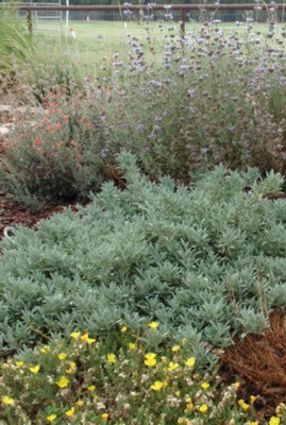Winter is a Time for Planning the Garden
Last updated 8/21/2014 at 9:22pm | View PDF

Peyton Ellas
Winter, the season of fewer garden chores, is a good season for planning changes you will make in the spring. Pruning deciduous trees and shrubs for safety or to control size, finishing clean-up and adding mulch and compost to existing beds are the main tasks of winter.
It is best for the plant if we delay removing frost-damaged foliage until spring, if we can tolerate the appearance. In dry winters such as this, we must also monitor our garden's water needs more closely. Water needs are lower, but even our deciduous trees, shrubs and dormant perennials and grasses need some water. Long gaps between storms require us to continue to irrigate. The ground should be moist, but avoid over-saturation. Be prepared to turn off irrigation system or delay watering when a storm does deliver measurable rain, to avoid wasting our precious stored water.
In the vegetable garden, we can plant cool season crops in early February. This list includes plants in the cruciferous family: broccoli, kale, cabbage, cauliflower. Get an early start on the long-season cabbages and cauliflowers. Kale, sprouting and rapini broccoli, Asian-style greens like pac choi and bak choi, mustard and greens in the chard/beet family can be planted anytime and harvested after about 35 days for baby greens.
Watch for aphids, whiteflies, cabbage worms and earwigs, all of which can decimate new seedlings. There are many natural, organic pesticides that are effective, and in a small garden hand removal, row covers, or washing insects off may be sufficient. Try to follow "least toxic first" when choosing pest-control methods.
In the ornamental garden, rainy, cold or foggy days are perfect for planning our spring planting. Maybe we are transitioning from a thirsty, East-coast-centric garden to a more California-style. Perhaps we want to reduce both our water-use and maintenance.
These goals start with choosing plants that are suited to our climate. Most of us live in climate zones eight or nine.
Our inland California gardens lack the moderating influence of the ocean, where many of our popular and otherwise climate-right plants originate. For these species, including many California-native plants and lavender, a bit of protection from extreme cold and extreme heat can help. Also, our soils are alkaline on the PH scale, and plants from other parts of the world that prefer acidic soil will be more susceptible to pests and diseases all of their lives.
Other characteristics to look for when choosing plants for a low-maintenance garden are: disease and insect-resistant; non-invasive; minimal pruning, staking, division and fertilization requirements, and long-lived. You may also think about how you have been trained to believe a garden should look and how much care you have been trained to think you need to do.
Sometimes reducing maintenance is as simple (and as hard!) as just letting the plant live according to its nature, even if that means sprawling or partial summer dormancy. Most plants that are suited to our area don't need to be watered, pruned and fertilized as much as we typically do, and this includes most lawns. Winter is a good season to consider the way we think about our gardens, to consider thinking about them differently.
Peyton Ellas is a landscape designer specializing in California native plant-based gardens and owns Auntie's Home Grown, a small sustainable farm operation.








Reader Comments(0)